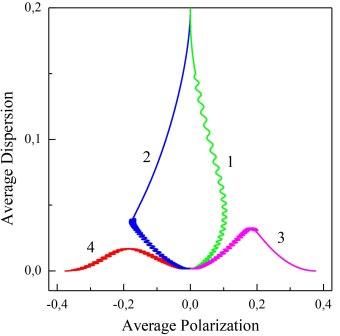Speaker
Description
Regular domain structures (RDS) with submicron period are widely used in nonlinear optics, non-volatile memory and laser investigations, which causes a significant interest in research to create the new methods for its fabrication. Classical methods of the RDSs formation do not allow us to achieve the required high precision necessary for modern devices. Within the framework of the Landau – Ginzburg phenomenological theory an innovative method for fabrication RDS with micron and submicron period was proposed.
Using the lithium tantalate crystal as an example, the kinetics of ordering of high non-equilibrium domain structure near Curie point under the influence of external high-frequency electric field was investigated. It was shown that the quenching depth of the sample influences on the nature of the evolution of the system, but not on its final result. Independently of the quenching depth, the system evolves to a polydomain (regular) structure, which remains stable even when the external electric field is turned off.
There was shown that the effect of the external high-frequency electric field on the relaxing domain structure has a threshold character depending on the frequency and the amplitude of the electric field. Critical values of these parameters for ferroelectrics that undergo the second order phase transition can be observed from the model. For lithium tantalate crystal the critical frequency is $f_{cr}$ = 4.8∙1010 Hz and the critical amplitude is $E_{cr}$ = 1.26∙106 V/m (Fig. 1). The RDS formation takes place in cases, when $f > f_{cr}$ or $E < E_{cr}$. The second variant is preferable because of the minimal risk of the crystal destruction. The numerical analysis showed the thermodynamic stability of the formed RDS even after turning off the external electric field. It was shown, that near Curie point $(T_C – T_1 ≤ 3K)$ the critical value of the amplitude substantially depends on the quenching depth, which may be related to the size of the initial inhomogeneities. With deep quenching $(T_C – T_1 > 3K)$ the critical value of the amplitude is determined only by the frequency of the external electric field (Table 1).

Fig 1. Phase trajectories of the system for the parameters $r_c(0)=2$, $\overline{\pi}_0=0$, $D_0=0.001$, $f=10^{10}$ Hz, $\alpha=0.03$. Curves 1-4 correspond to the amplitudes of electric field $|\varepsilon_m|$: {0.01; 0.031; 0.0315; 0.05} respectively (in dimensionless units)

Table 1. Critical values of the amplitude of the external electric field $E_{cr}(10^5 V/m)$ depending on the frequency $\Omega$ and quenching temperature $T_1$
There was shown that the evolution of domains can occurs with the formation of short-lived quasistationary asymmetric polydomain phases, which can exist up to several minutes (Fig. 1). The developed model is not only applied, but also fundamental. The relaxation process is accompanied by a gradual enlargement of the domain structure, which obeys the square root law. The derived time dependence of the correlation radius makes it possible to estimate the degree of enlargement of the domain structure and determine the fundamental parameter — the radius of interatomic interaction. Due to the formation of domains immediately after rapid quenching this method allows the use of electric fields of small amplitude. A similar effect allows us to direct the process of ordering the system to the formation of domains of the desired type. It is expected that this approach will reduce the risk of crystal destruction and significantly increase the precision of the RDS obtained.
